5.5 Observational Learning and Cognition

BASKETBALL IQ
 Jeremy Lin is not the fastest runner or highest jumper on the planet, and he is certainly not the biggest guy in professional hoops. In the world of the NBA, where a player’s average height is about 6′7″ and average weight is 220 pounds, Jeremy is actually somewhat small (NBA.com, 2007, November 20; NBA.com, 2007, November 27). So what is it about this benchwarmer-turned-big-shot that makes him so special? Jeremy’s success, we suspect, is largely a result of qualities that are extremely hard to measure, like unstoppable confidence, dogged determination, and a penetrating basketball IQ, or mental mastery of the sport.
Jeremy Lin is not the fastest runner or highest jumper on the planet, and he is certainly not the biggest guy in professional hoops. In the world of the NBA, where a player’s average height is about 6′7″ and average weight is 220 pounds, Jeremy is actually somewhat small (NBA.com, 2007, November 20; NBA.com, 2007, November 27). So what is it about this benchwarmer-turned-big-shot that makes him so special? Jeremy’s success, we suspect, is largely a result of qualities that are extremely hard to measure, like unstoppable confidence, dogged determination, and a penetrating basketball IQ, or mental mastery of the sport.
“He has a very natural understanding of the game, an ability to see the game and anticipate the game,” Coach Diepenbrock explains. “There are very few people that have the same basketball IQ,” he notes. “That’s what separates him from other players” (P. Diepenbrock, personal communication, May 21, 2012).
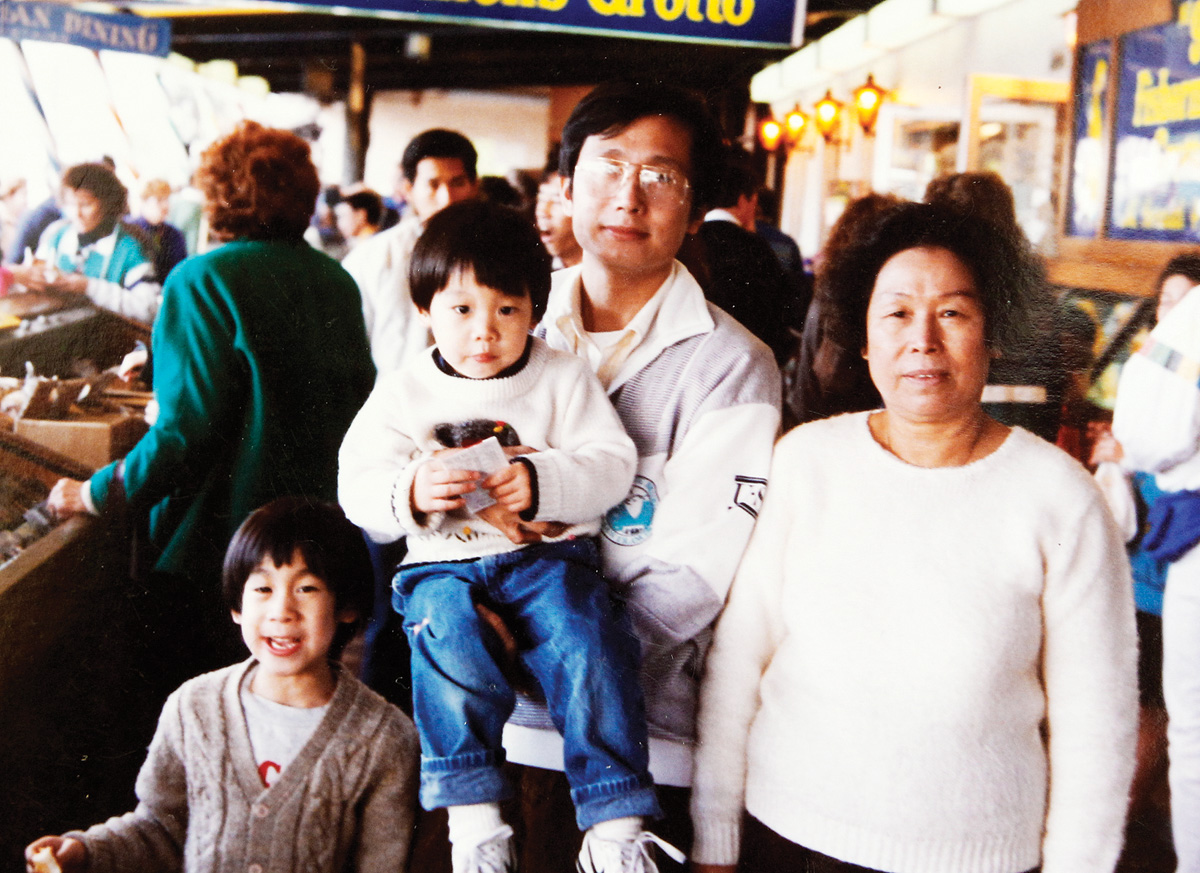
The roots of Jeremy’s hoops smarts reach back to his father’s native country. Growing up in Taiwan, Gie-Ming Lin didn’t have much exposure to basketball, but he was fascinated by what he saw of the sport. According to ESPN, “He dreamed of coming to the United States for two reasons: to complete his PhD and ‘to watch the NBA’” (O’Neil, 2009, December 10). When Gie-Ming finally arrived in America, he fell head over heels in love with basketball, taping NBA games and watching them any chance he got. This 5′6″ engineering student had never picked up a basketball, but he managed to learn the techniques of the game by closely watching the moves of NBA legends like Kareem Abdul-Jabbar, Larry Bird, and Magic Johnson (O’Neil, 2009, December 10). Eventually, he tried those moves on the court, and passed them along to Jeremy and his other two sons.
Gie-Ming learned by observing and imitating NBA greats. These players served as models by demonstrating behaviors (for example, Kareem’s hook shot; O’Neil, 2009, December 10). We call this process observational learning, as it results from watching the behavior of others. According to Bandura (1986), this type of learning is more likely to occur when the learner: (1) is paying attention to the model; (2) remembers what she observed (Bahrick, Gogate, & Ruiz, 2002); (3) is capable of performing the behavior she has observed; and (4) is motivated to demonstrate the behavior.
The Power of Observational Learning
LO 14 Summarize what Bandura’s classic Bobo doll study teaches us about learning.
Think about how observational learning impacts your own life. Speaking English, eating with utensils, and driving a car are all skills you probably picked up in part by watching and mimicking others. Do you ever use slang? Phrases like “gnarley” (cool) from the 1980s, “Wassup” (What is going on?) from the 1990s, and “peeps” (my people, or friends) from the 2000s caught on because people copy what they observe others saying and writing. Consider some of the phrases trending today that 20 years from now people won’t recognize.
220
But take note: Observational learning doesn’t necessarily require sight. Let’s return to Ivonne, who competes in triathlons, consisting of 1 mile of swimming, 25 miles of biking, and 6 miles of running. Ivonne performs the swimming and running sections of the triathlon attached to a guide with a tether, and the bike section on a tandem bike with the guide. To fine-tune her swimming technique, she feels her swim coach demonstrate the freestyle stroke. Standing in the water behind him, Ivonne places one hand on his back and the other on his arm while he goes through the motions of a stroke. She feels the angle of his arms as they break the water’s surface, the distance between his fingers as he plows through the water, and the position of his wrist throughout the motion. Then she imitates the movement she observed through her sense of touch.
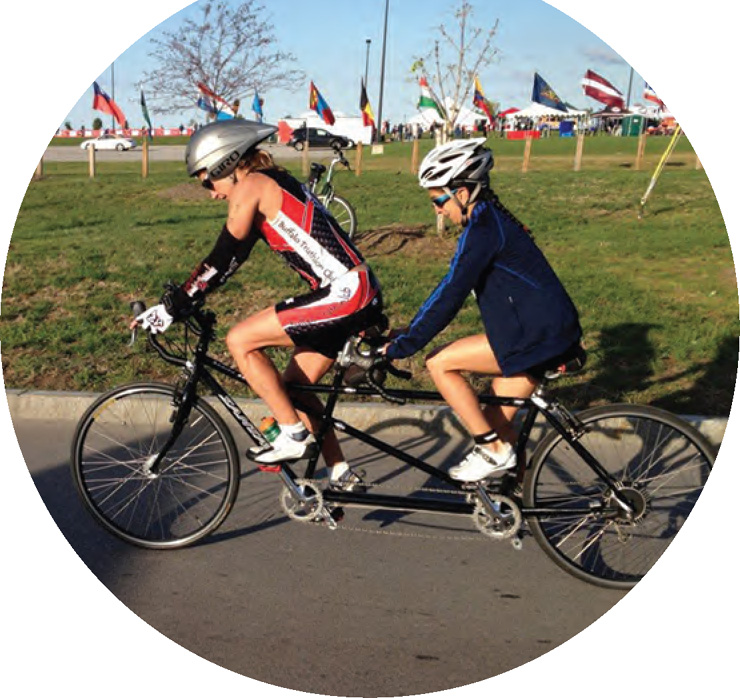
Please Play Nicely with Your Doll
Just as observational learning can lead to positive outcomes like sharper basketball and swimming skills, it can also breed undesirable behaviors. The classic Bobo doll experiment conducted by psychologist Albert Bandura and his colleagues revealed just how fast children can adopt aggressive ways they see modeled by adults, as well as exhibit their own novel aggressive responses (Bandura, Ross, & Ross, 1961). In one of Bandura’s studies, 76 preschool children were placed in a room alone with an adult and allowed to play with stickers and prints for making pictures. During their playtime, some of the children were paired with adults who acted aggressively toward a 5-foot-tall inflatable Bobo doll—punching it in the nose, hitting its head with a mallet, kicking it around the room, and yelling phrases such as, “Sock him in the nose,” “Hit him down,” and “Pow!” The other children in the study were paired with adults who played with toys peacefully (Bandura et al., 1961).

221
At the end of the experiment, all the children were allowed to play with a Bobo doll themselves. Those who had observed adults attacking and shouting were much more likely to do the same. Boys were more likely than girls to mimic physical aggression, especially if they had observed it modeled by men. Boys and girls were about equally likely to imitate verbal aggression (Bandura et al., 1961).
try this
Identify the independent variable and dependent variable in the experiment carried out by Bandura and colleagues. What might you change if you were to replicate or duplicate this experiment?
Independent variable: exposure to an adult displaying aggressive or nonaggressive behavior. Dependent variable: child’s level of aggression.
Bandura and his colleagues also looked at how children were influenced by observing the consequences of the adults’ behaviors. Children were more likely to copy models who were rewarded for their aggressive behavior and less likely to mimic those who were punished (Bandura, 1986).
Violence in the Media
Psychologists have followed up Bandura’s research with studies investigating how children are influenced by violence they see on television, movies and video games, and on the Internet. The American Academy of Pediatrics sums it up nicely: “Extensive research evidence indicates that media violence can contribute to aggressive behavior, desensitization to violence, nightmares, and fear of being harmed” (American Academy of Pediatrics, 2009, p. 1495). One large study found that children who watched TV programs with violent role models, such as Starsky and Hutch (a detective series from the 1970s that included violence and suspense), were at increased risk when they became adults of physically abusing their spouses and getting into trouble with the law (Huesmann, Moise-Titus, Podolski, & Eron, 2003). A more recent study conducted in New Zealand followed over 1,000 children from as early as birth until they were around 26 years old. The researchers found that the more television the children watched, the more likely they were to show antisocial behaviors as young adults. Interestingly, this association was between antisocial behaviors and excessive television viewing, regardless of the content (Robertson, McAnally, & Hancox, 2013).
Critics caution, however, that an association between media portrayals and violent behaviors doesn’t mean there is a cause-and-effect relationship (establishing an association is not the same as pinning down a cause). As Huesmann and colleagues (2003) pointed out, there are other factors related to parenting that could influence both television viewing and aggression. If a parent is emotionally neglectful and places a child in front of the television all day, the child may eventually imitate some of the aggression she sees on TV. At the same time, the child may resent the parent for ignoring her, and this resentment could lead to aggression. But how do you know which of these factors—television exposure or parenting approach—is more important in the development of aggressive tendencies? This is an active area of psychological research, but experts agree that television and other forms of media may influence aggressive tendencies in children (Clemente, Espinosa, & Vidal, 2008; Office of the Surgeon General et al., 2001). The American Academy of Pediatrics has recommended that children should be limited to less than 1–2 hours of total screen time per day (American Academy of Pediatrics, 2001). Unfortunately, children and their parents have not responded to this recommendation. In fact, the average screen time has increased, with preschool-age children in the United States reported to have an average of 4.4 hours of daily screen time (Tandon, Zhou, Lozano, & Christakis, 2011). Instead of focusing on the number of hours children watch television, some have suggested that we should focus on program content, encouraging families and caregivers to reduce exposure to programs that contain violence and aggression, and to increase the amount of content with prosocial behavior (Christakis et al., 2013; McCarthy, 2013).
222
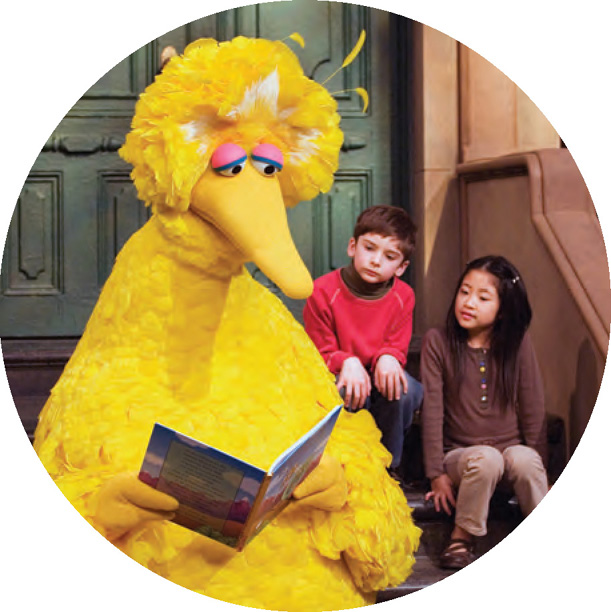
Prosocial Behavior and Observational Learning
Here’s the flip side to this issue: Children also have a gift for mimicking positive behaviors. When children watch shows similar to Sesame Street, they receive messages that encourage prosocial behaviors, meaning they foster kindness, generosity, and forms of behavior that benefit others.
Let’s look more closely at research designed to determine the impact of prosocial models. Using scales to measure children’s stereotypes and cultural knowledge before and after they watch TV shows, a group of researchers found evidence that shows like Sesame Street can have a positive influence (Cole, Labin, & del Rocio Galarza, 2008). Based on their review of multiple studies, these researchers made recommendations to increase prosocial behaviors. Children’s shows should have: intended messages; include prosocial information about people of other cultures and religions; be relevant to children in terms of culture and environment; and be age-appropriate and contain intentional and direct (unhidden) messages aimed at educating children about people from different backgrounds.
Adults can also pick up prosocial messages from media. In a multipart study, researchers exposed adults to prosocial song lyrics (as opposed to neutral lyrics). The first experiment found that listening to prosocial lyrics increased the frequency of prosocial thoughts. Findings from the second experiment indicated that listening to a song with prosocial lyrics increased empathy, or the ability to understand what another person is going through. The third experiment found that listening to a song with prosocial lyrics increased helping behavior. These researchers only looked at the short-term effects, but exposing people continuously to prosocial lyrics may also have a lasting impact (Greitemeyer, 2009).
You know from reading earlier sections that humans are not the only ones who can learn. Dogs, rats, pigeons, and all types of creatures can learn through classical and operant conditioning. As you might expect, our furry and feathered friends can also learn through observation.
didn’t SEE that coming
Monkey See, Monkey Do: Can Apes Learn by Observation, Too?
 Bonnie the orangutan, a 142-pound ape living at the Smithsonian National Zoological Park in Washington, D.C., has always been fascinated by people. When crowds come to the zoo and gawk at the orangutans swinging through trees and chewing on branches, Bonnie returns their stares with equal intensity. Years of people-watching have made this adult ape an expert in the art of “monkey see, monkey do.” Bonnie particularly enjoys imitating the zookeepers; she can often be seen picking up handfuls of hay and using them to sweep floors, or scrubbing windows with fabric from her bedding (E. Stromberg, personal communication, June 21, 2010). But of all Bonnie’s humanlike abilities, whistling is the one that has captured the most scientific interest.
Bonnie the orangutan, a 142-pound ape living at the Smithsonian National Zoological Park in Washington, D.C., has always been fascinated by people. When crowds come to the zoo and gawk at the orangutans swinging through trees and chewing on branches, Bonnie returns their stares with equal intensity. Years of people-watching have made this adult ape an expert in the art of “monkey see, monkey do.” Bonnie particularly enjoys imitating the zookeepers; she can often be seen picking up handfuls of hay and using them to sweep floors, or scrubbing windows with fabric from her bedding (E. Stromberg, personal communication, June 21, 2010). But of all Bonnie’s humanlike abilities, whistling is the one that has captured the most scientific interest.
223
BUT CAN SHE CARRY A TUNE?
No one deliberately taught Bonnie to whistle. It’s not even clear when and how she picked up the talent. One day back in the 1980s, a zookeeper just happened to notice Bonnie alone in her cage, whistling to herself. Researchers think she probably acquired the skill through observational learning, perhaps by hearing and copying one of her caretakers (Stone, 2009; Wich et al., 2009). Previously, scientists had shown that orangutans and chimpanzees could learn to copy human vocalizations, but only with plenty of training (Furness, 1916; Hayes, 1951, cited in Wich et al., 2009). Until Bonnie came along, there were no documented cases of apes doing it on their own, without help or reinforcement (Wich et al., 2009).
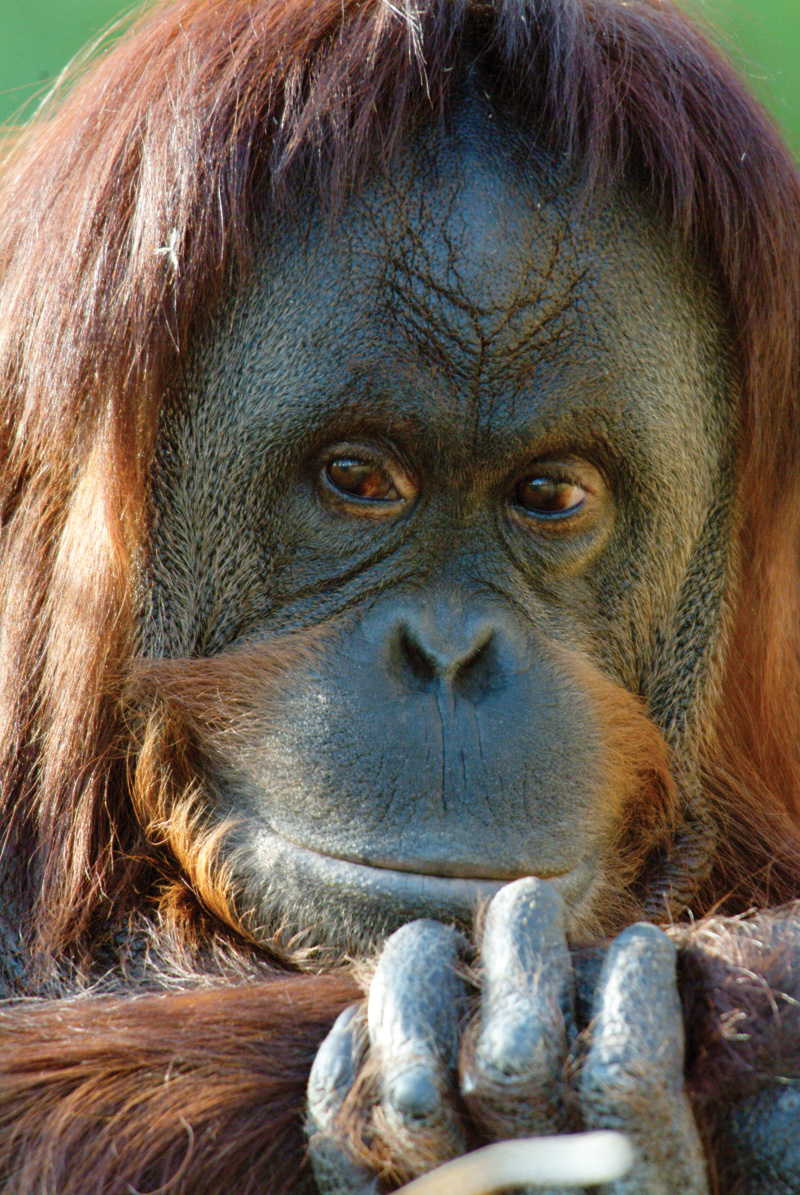
“I get asked quite often if Bonnie’s ability to teach herself to whistle surprises me,” says Erin Stromberg, one of the zookeepers. “But working with these incredibly intelligent apes every day, I’ve stopped being surprised at their abilities, and simply am just amazed and impressed by them daily” (E. Stromberg, personal communication, June 21, 2010).
Bonnie’s case not only illustrates the power of observational learning, it also suggests that primates might be capable of creating completely new sounds, possibly shedding light on how language evolved in one of the orangutan’s not-so-distant relatives: human beings (Wich et al., 2009).
Thus far we have focused on types of learning that are visible or observable in some way. You can actually observe the process leading up to the dog salivating, the rat pushing the lever, the child smacking the Bobo doll. But learning can also occur in ways that are much more internal and not so easily observed. Learning can be cognitive in nature.
Learning and Cognition: A map That Cannot Be Seen
LO 15 Describe latent learning and explain how cognition is involved in learning.
Ivonne’s feet pound the streets of Boston. She is among some 20,000 of the world’s finest runners competing in its oldest annual 26.2-mile running race, the Boston Marathon. (Ivonne has nabbed first place in the Women’s Visually Impaired division three times.) She runs with teammates who make sure the path is clear, allowing her to focus on her performance instead of becoming preoccupied with bumping into obstacles.

Before the race, Ivonne checks online to see if there is a description of the course or studies a map with her husband or a friend in order to learn the location of important landmarks such as hills, major turns, bridges, railroad tracks, and so on. “Doing this helps me feel that I have an idea of what to expect, and when to expect it,” Ivonne says. The mental layout she creates is called a cognitive map, and it continues to come together when she’s running the race. In fact, we all create these cognitive maps, which provide a spatial representation to help us navigate our environment. As Ivonne runs, she hears sounds from all directions—the breathing of other runners, their feet hitting the ground, chatter from the sidelines—and uses these auditory cues to produce a mental map of her surroundings. These maps are created through latent learning, a type of learning that occurs without awareness and regardless of reinforcement, and that remains hidden until there is a need to use it.
224
Latent Learning: Rats That Know Where to Go
Edward Tolman and his colleague C. H. Honzik demonstrated latent learning in rats in their classic 1930 maze experiment (Figure 5.5). The researchers took three groups of rats and let them run free in mazes for several days. One group received food for reaching the goal boxes in their mazes; a second group received no reinforcement; and a third received nothing until the 11th day of the experiment, when they, too, received food for finding the goal box. As you might expect, rats getting the treats from the onset solved the mazes more and more quickly as the days wore on. Meanwhile, their unrewarded compatriots wandered through the twists and turns, showing only minor improvements from one day to the next. But on Day 11 when the researchers started to give treats to the third group, the behavior of the rats changed. After just one round of treats, the rats were scurrying through the mazes and scooping up the food as if they had been rewarded throughout the experiment (Tolman & Honzik, 1930). They had apparently been learning, even when there was no reinforcement for doing so—or in simpler terms, learning just for the sake of learning.
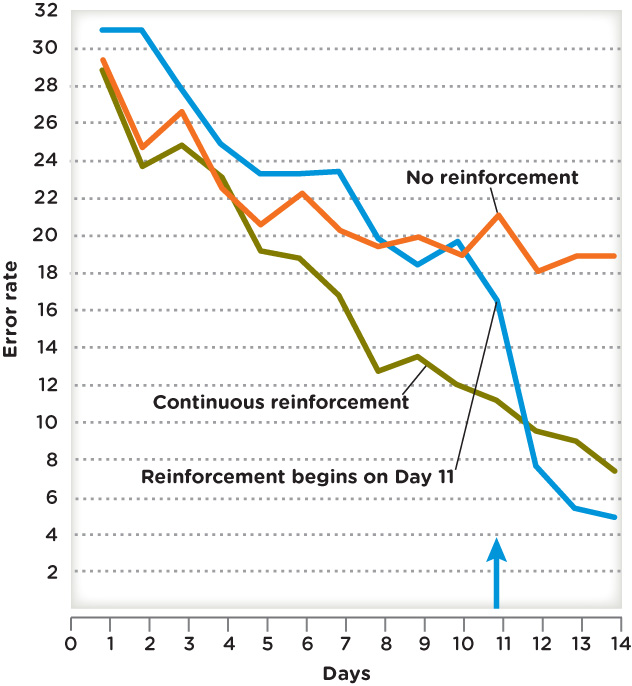
We all do this as we acquire cognitive maps of our environments. Without realizing it, we remember locations, objects, and details of our surroundings, and all of this information is brought together in a mental layout (Lynch, 2002). Research suggests that visually impaired people forge cognitive maps without the use of visual information. Instead, they use “compensatory sensorial channels” (hearing and sense of touch, for example) as they gather information about their environments (Lahav & Mioduser, 2008).
Jeremy: Coach Diepenbrock's answer - How did it feel to watch Jeremy's dream run with the Knicks?
This line of research highlights the importance of cognitive processes underlying behavior and suggests that learning can occur in the absence of reinforcement. Because of the focus on cognition, this research approach conflicts with the views of Skinner and some other 20th-century psychologists who adhered to a strict form of behaviorism.
Many other studies have challenged Skinner’s views. Wolfgang Köhler’s (1925) research on chimpanzees suggests that animals are capable of thinking through a problem before taking action. He designed an experiment in which chimps were presented with out-of-reach bananas, and showed that the animals were able to plan a variety of banana-fetching strategies, including stacking crates to climb on. Here, the chimps displayed insight, a sudden coming together of awareness of a situation, leading to the solution of a problem (Chapter 7).
225
Today, most psychologists agree that both measurable behaviors and cognitive processes such as insight are necessary and complementary elements of learning. Environmental factors have a powerful influence on behavior, as Pavlov, Skinner and others discovered, but every behavior can be traced back to activity in the brain. Understanding how cognitive processes translate to behaviors remains one of the great challenges facing psychologists.
IT KEEPS GETTING BETTER
 Wondering what became of Jeremy Lin following “Linsanity”? After suffering a knee injury in the spring of 2012, Jeremy was out of commission for the remainder of the season with the Knicks. He eventually signed a deal with the Houston Rockets, where he was still playing at the time of this printing. He has proven he can hold his own as a starting point guard in the NBA, and we suspect he will continue stirring up “Linsanity” in the future (Ogden, 2013, February 27).
Wondering what became of Jeremy Lin following “Linsanity”? After suffering a knee injury in the spring of 2012, Jeremy was out of commission for the remainder of the season with the Knicks. He eventually signed a deal with the Houston Rockets, where he was still playing at the time of this printing. He has proven he can hold his own as a starting point guard in the NBA, and we suspect he will continue stirring up “Linsanity” in the future (Ogden, 2013, February 27).
 Ivonne Mosquera-Schmidt isn’t doing so badly herself. Running at the Paralympics National Trials in 2012, she set the U.S. record for the 1,500-meter event for totally blind women. Then in 2013, she won the gold medal at the Paratriathlon World Championships. Now she is beginning to prepare for the 2016 Paralympics, which are scheduled to be held in Rio de Janeiro, Brazil. In between all the training and racing, Ivonne works full time as a project manager at the Dow Chemical Company. What keeps her going? Apart from the obvious reinforcers, such as love of sport, Ivonne derives great satisfaction from bridging the gap between the able-bodied and disabled communities. Blind and sighted athletes have a common appreciation for exercise, and training and racing unite them in a very human way. “We can have the same dreams, the same goals, the same ambitions,” Ivonne says, “and [exercise] gets us working together.”
Ivonne Mosquera-Schmidt isn’t doing so badly herself. Running at the Paralympics National Trials in 2012, she set the U.S. record for the 1,500-meter event for totally blind women. Then in 2013, she won the gold medal at the Paratriathlon World Championships. Now she is beginning to prepare for the 2016 Paralympics, which are scheduled to be held in Rio de Janeiro, Brazil. In between all the training and racing, Ivonne works full time as a project manager at the Dow Chemical Company. What keeps her going? Apart from the obvious reinforcers, such as love of sport, Ivonne derives great satisfaction from bridging the gap between the able-bodied and disabled communities. Blind and sighted athletes have a common appreciation for exercise, and training and racing unite them in a very human way. “We can have the same dreams, the same goals, the same ambitions,” Ivonne says, “and [exercise] gets us working together.”

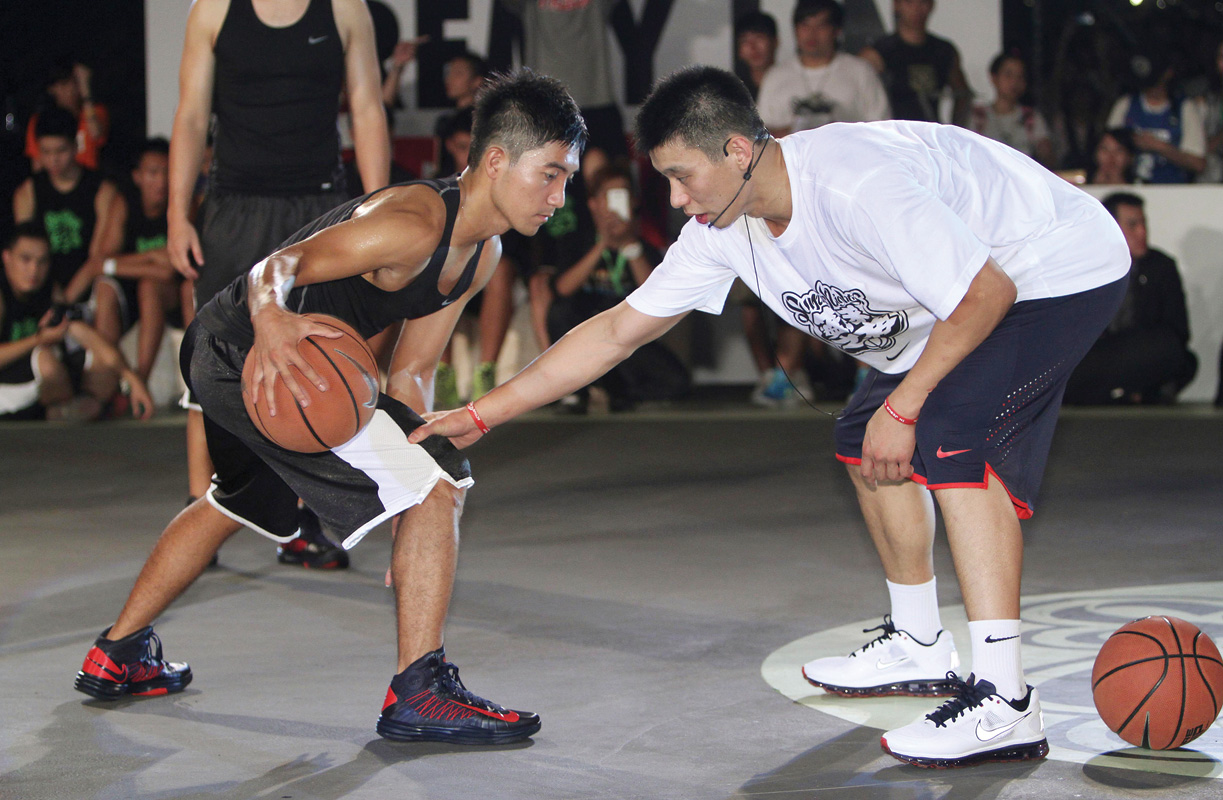
226
show what you know
Question 5.17
1. You want to learn how to play basketball, so you watch videos of Jeremy Lin executing plays. If your game improves as a result, this would be considered an example of:
- observational learning.
- association.
- prosocial behavior.
- your cognitive map.
Question 5.18
2. Observational learning results in a wide variety of learned behaviors. Describe several types of behaviors you have learned through observation of a model.
Question 5.19
3. Although Skinner was a strong advocate for the theory that reinforcement is the cause of learning, there is robust evidence that reinforcement is not always necessary. This comes from experiments studying:
- positive reinforcement.
- negative reinforcement.
- latent learning.
- stimulus generalization.
 CHECK YOUR ANSWERS IN APPENDIX C.
CHECK YOUR ANSWERS IN APPENDIX C.